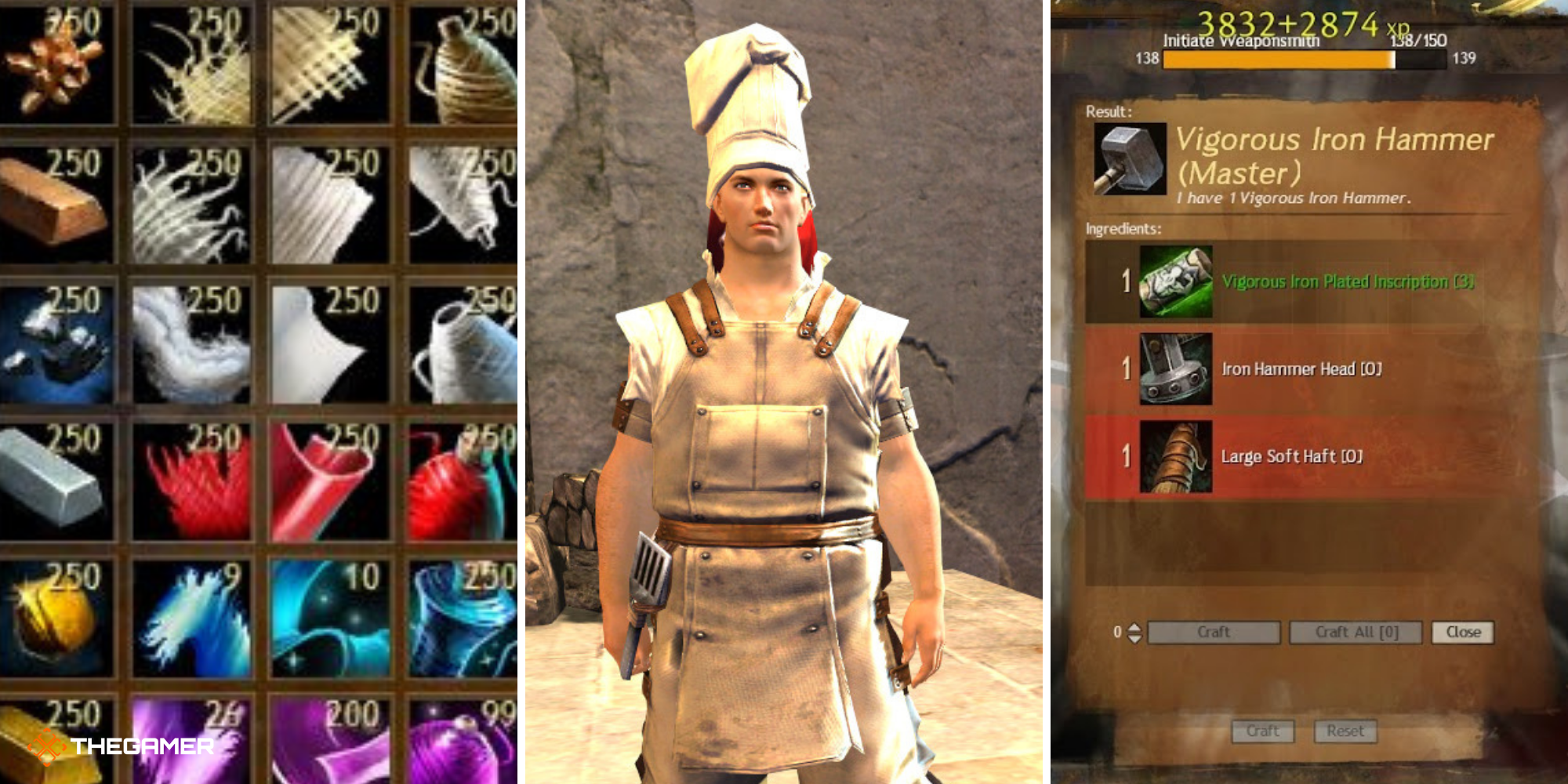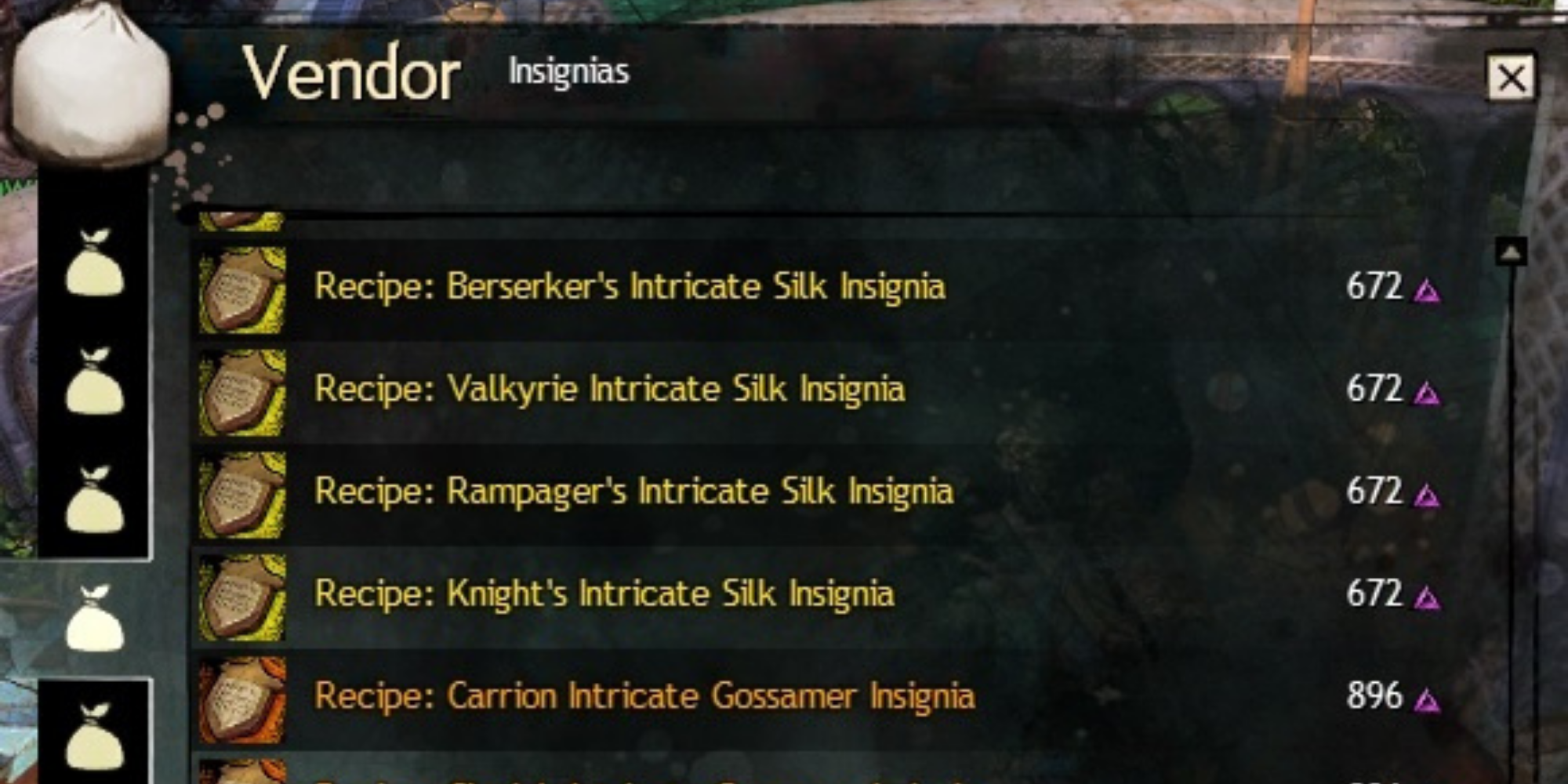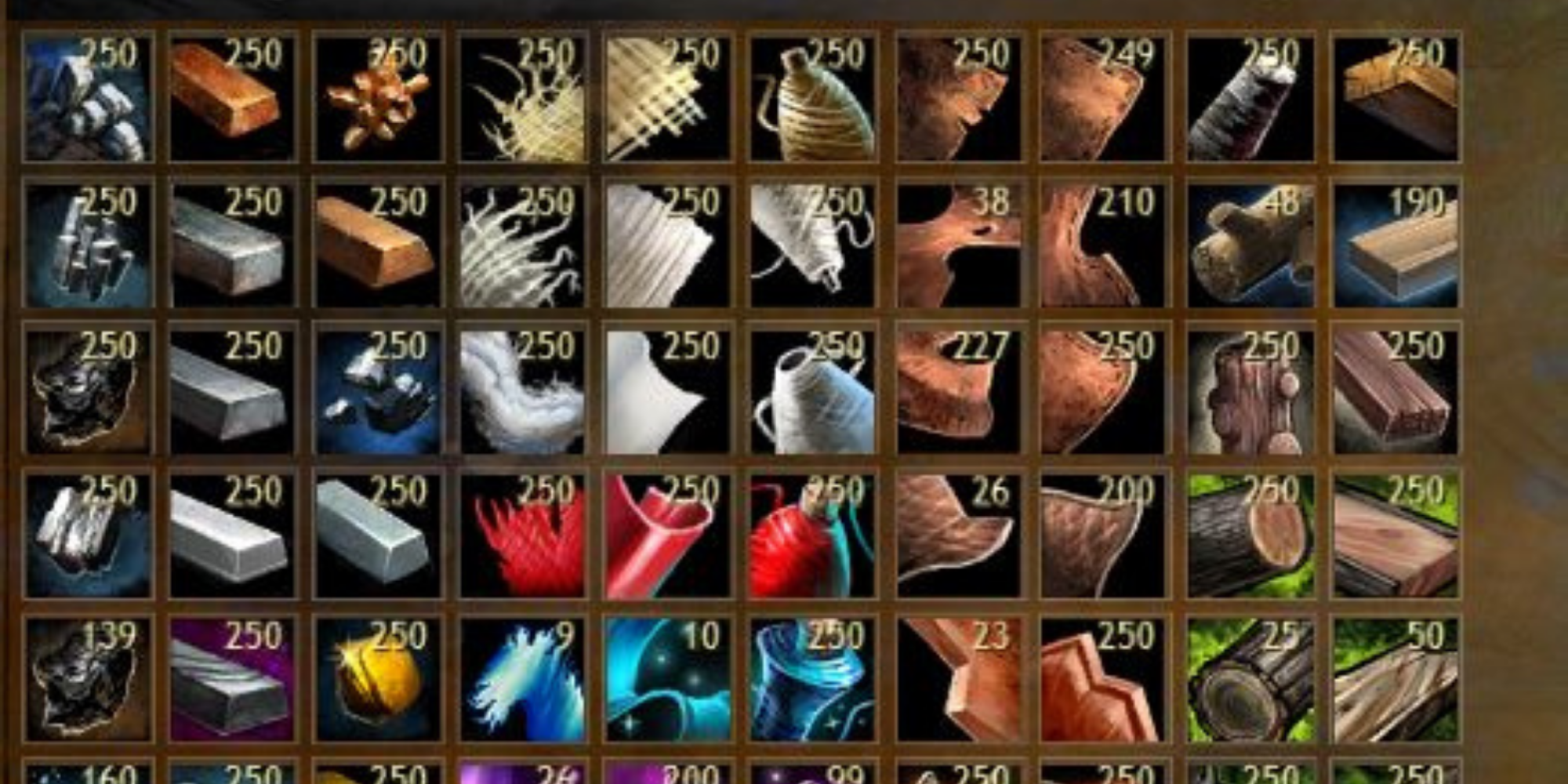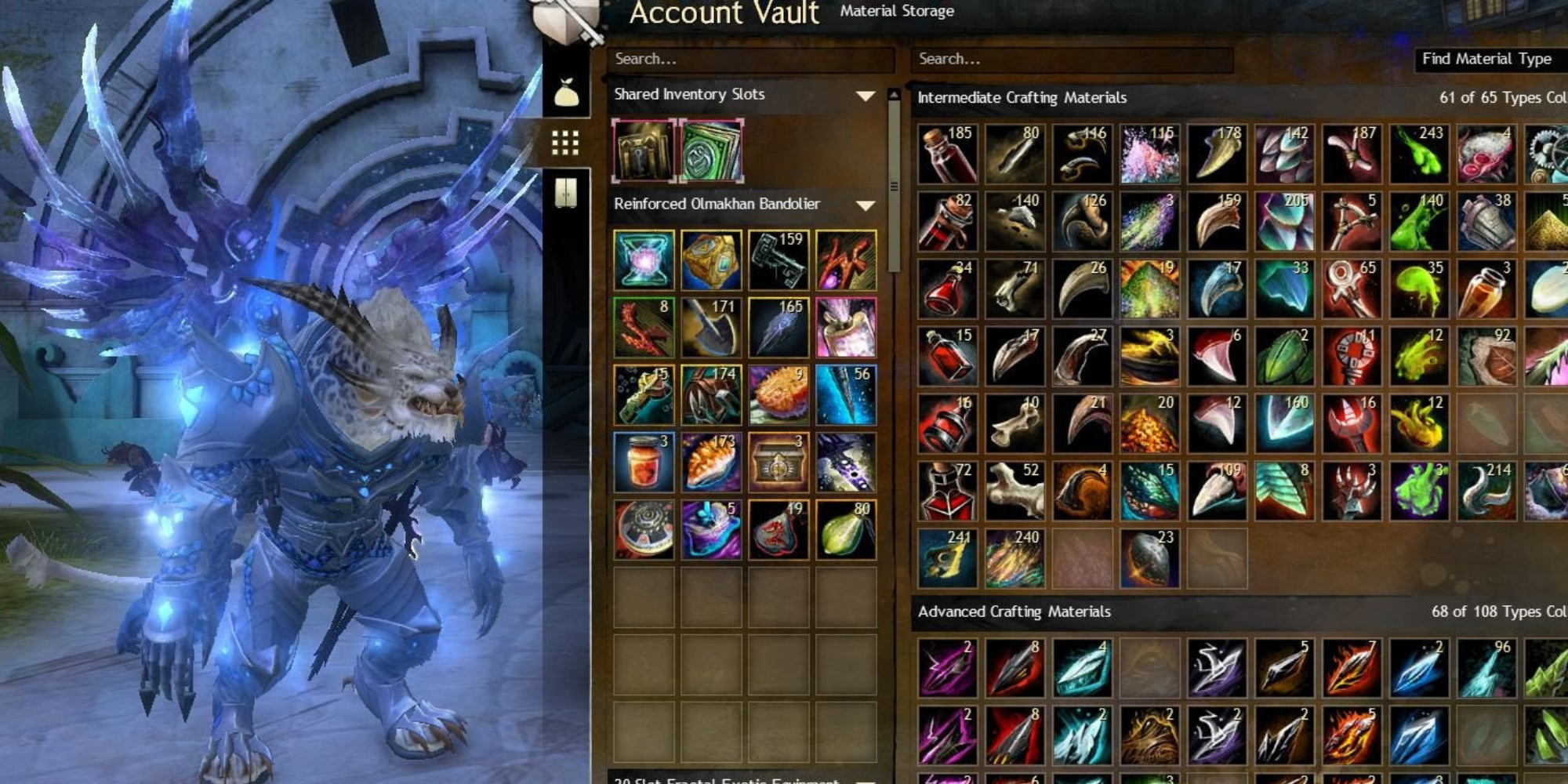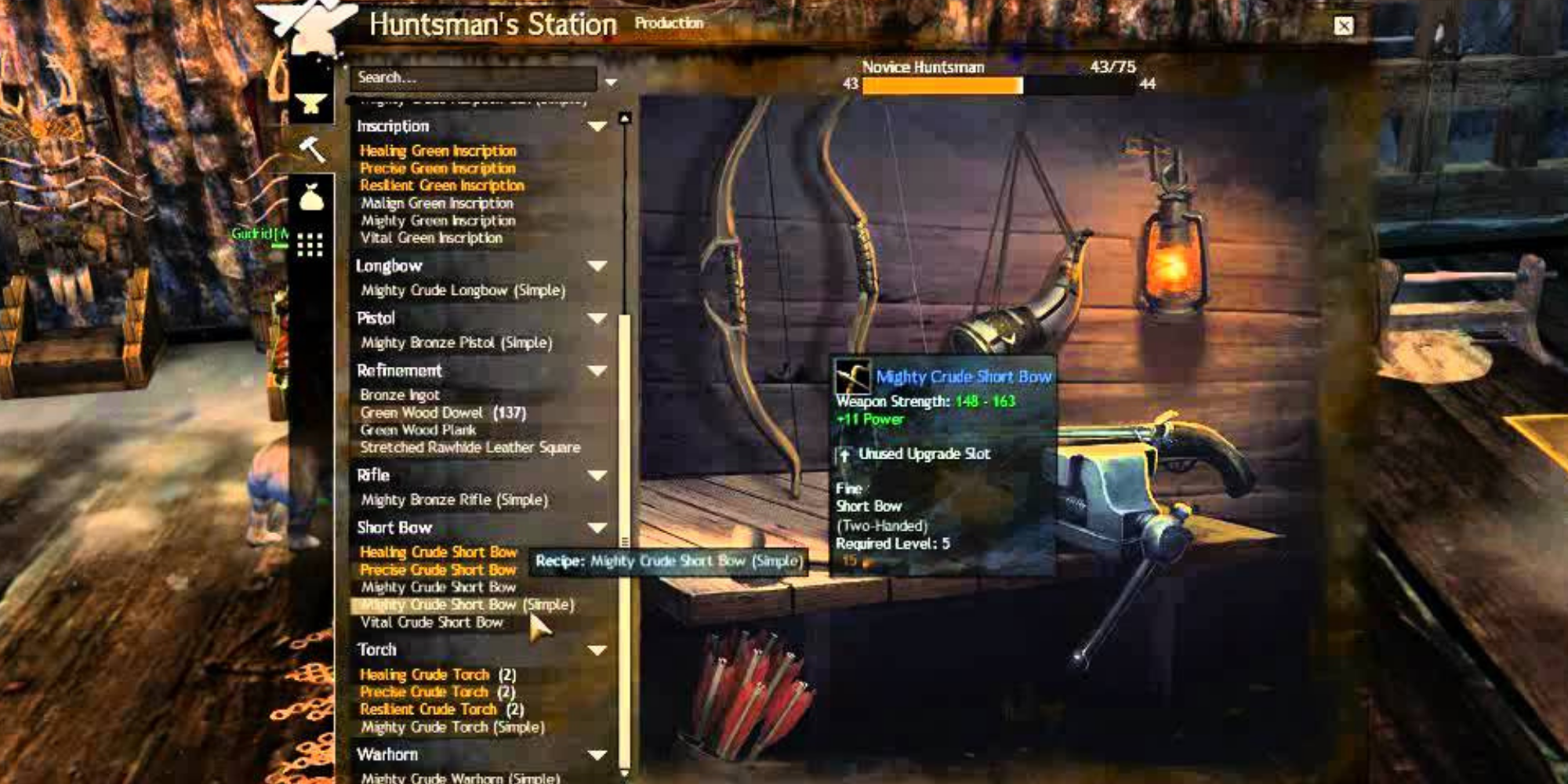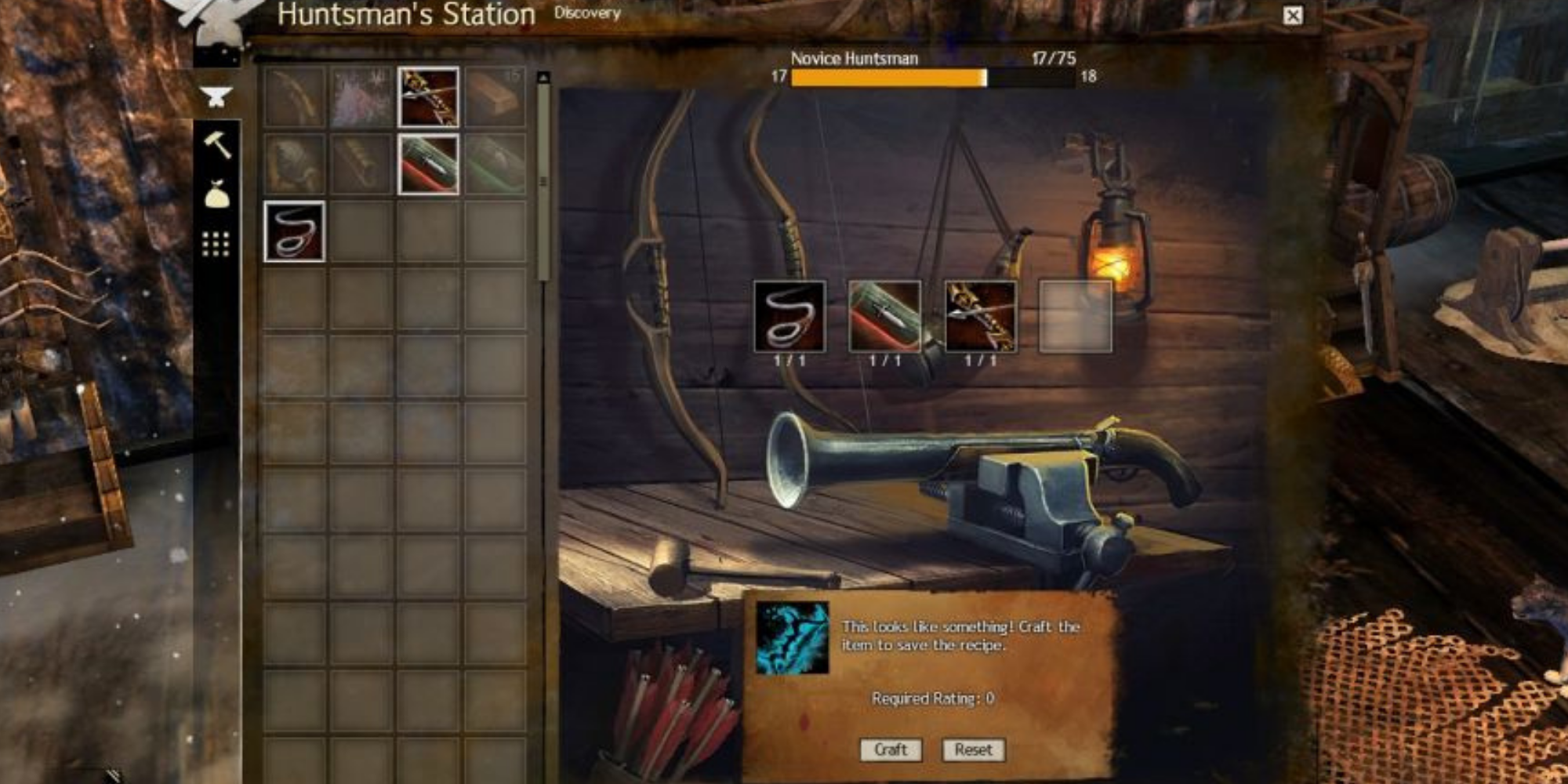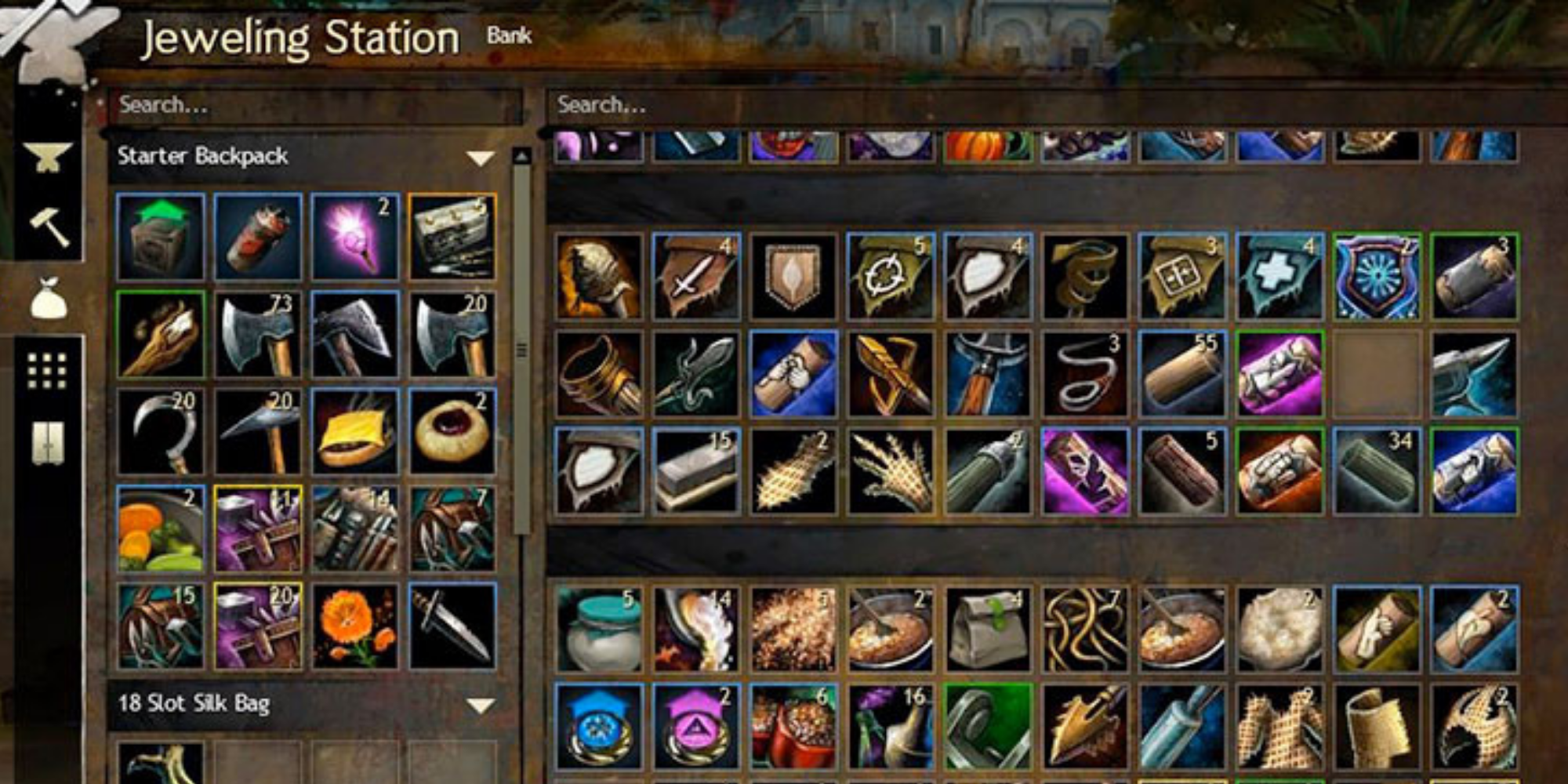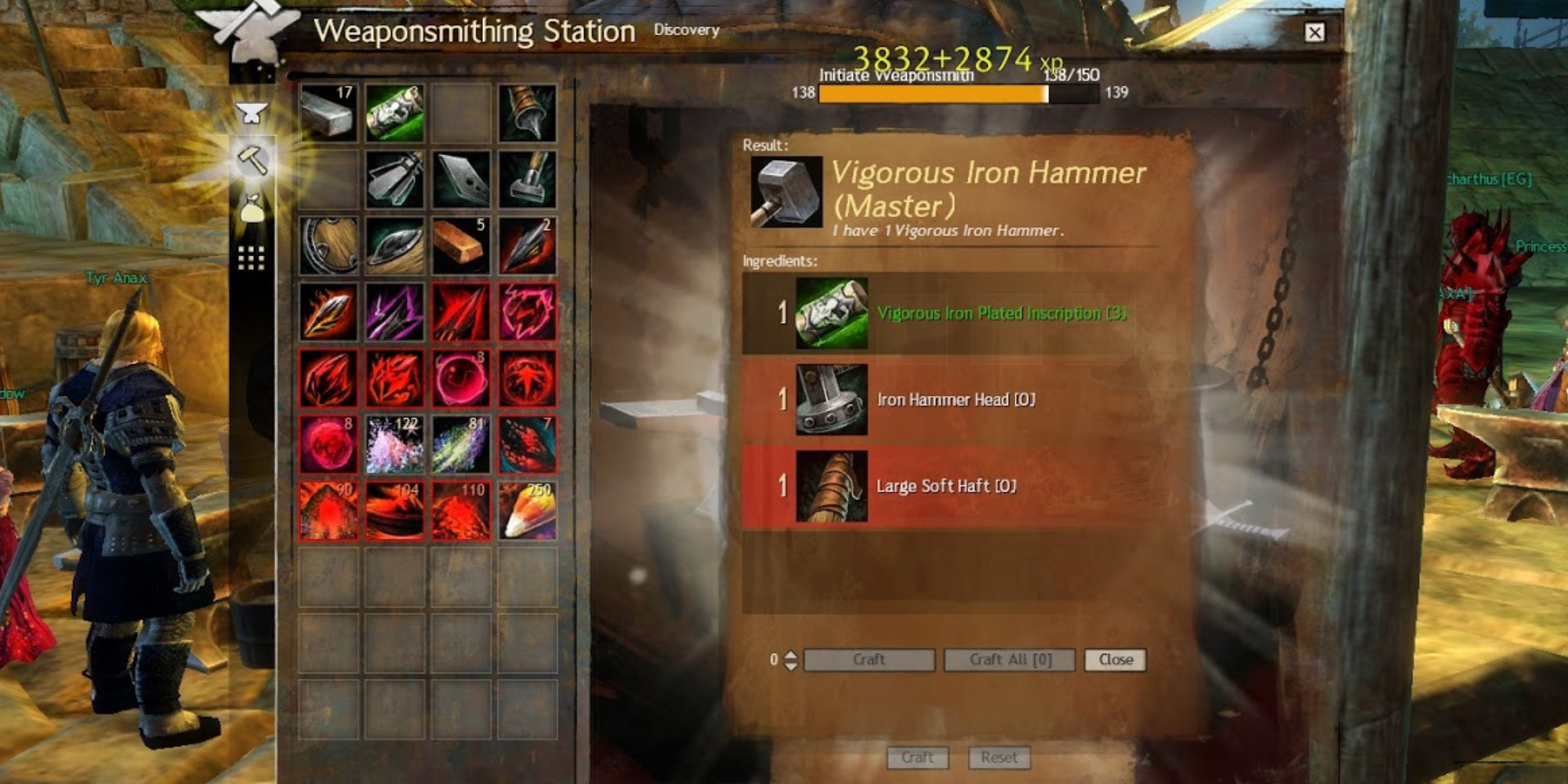Quick Links
Guild Wars 2 is a difficult game to play without good gear, especially in the end-game content. Sure, you could spend mountains of gold on the Trading House, but why bother when you can do it yourself? This guide helps introduce you to the MMORPG's crafting system so that you can make your own weapons, armor, and more.
Choosing A Crafting Discipline
You can have 2 crafting disciplines active at one time. The selection is not permanent, but it will cost gold to switch too much. Also, since only two can be active at once and you need to get to level up your crafting ability, it's a good idea to just stick to two for each character.
Start by reviewing this list of all the disciplines and the items that they make:
|
Discipline |
Gear They Can Make |
Upgrades They Can Make |
Other Items They Can Make |
Recommended Classes |
|---|---|---|---|---|
|
Armorsmith |
|
|
|
|
|
Artificer |
|
|
|
|
|
Chef |
|
|
|
|
|
Huntsman |
|
|
|
|
|
Jeweler |
|
|
|
|
|
Leatherworker |
|
|
|
|
|
Scribe |
|
|
|
|
|
Tailor |
|
|
|
|
|
Weaponsmith |
|
|
|
|
The recommended classes are based on whether are not they can use the gear that the discipline makes. However, the crafting discipline you choose should be centered around the kinds of weapons and gear you're most often using. Also, just because a Guardian uses heavy armor doesn't mean the Guardian has to be the one making the armor. Your Mesmer could be an armorsmith and hand over the armor when it's ready. Choosing the disciplines for each class is simply a time saver.
Note: It used to matter more because recipes would only be added for the character that consumed the recipe sheet. This was changed in 2016.
How To Accept A Discipline
Once you've decided which discipline to learn, you'll need to find a Master Craftsman (i.e. Master Artificer) of that discipline. There's one in every major city, as well as all the starting areas.
Talk to them and they'll teach you the craft for free. This is also the way you'll switch disciplines, should you need to, but that will cost 10 copper for every level you have in the discipline.
Before You Craft: Getting Recipes
You'll automatically be given some crafting recipes when you learn a discipline and as you level up in it. However, these aren't usually very exciting items. For the most part, you'll need to obtain recipes from other sources. You'll come across lots of Recipe Sheets just by naturally playing the game but, given how many recipes there are, the chances that you'll find the exact recipe you were looking for just by random chance isn't very good.
The first way to find a recipe you're looking for is by using the "Discovery" tab on the crafting station. It allows you to combine ingredients until you find something that creates a working item and, once you've made it once, it gives you the recipe. For more details, look below under the "At The Crafting Station" heading.
The second way is by getting the item's Recipe Sheet. Depending on the item in question, you may be unable to unlock it via the Discovery tab. Recipe Sheets come from a variety of sources, including:
- Karma Vendors
- The Black Lion Trading House
- Heart Quest Vendors
- Event Chests
- Laurel Vendors
- Looting Enemies
There are, of course, more ways to obtain these recipe sheets. If you're looking for something specific, don't just wander around hoping it'll drop - look it up online.
Before You Craft: Getting Materials
The materials are the things physically going into your item - woods, ores, raw foods, etc. Just like recipes, materials come from a variety of sources. However, we'll outline a few key ways you'll gather materials here.
- First, materials can be obtained for free from "nodes" in the open world. You'll see them on your minimap as little woods, ores, or leaves - that indicates that there's a material node at that location. You'll need gathering tools (either a pickaxe, axe, or scythe) to obtain it; those can be purchased in bulk from almost any vendor. Different maps in the world are programmed to have different kinds of nodes. You might find Green Wood Logs on one map and Ancient Wood Logs on another.
- Second, you can get a lot of materials by "salvaging" other items. You do that by purchasing a salvaging kit from almost any NPC merchant and double-clicking on it in your inventory. It'll show you which items can be salvaged and which ones cannot. Almost any gear is salvageable - so that's weapons, armor, trinkets, etc. - and will give you materials that correspond to the items' value and tier. For example, exotic armor may give Ectoplasm when salvaged. Many of the large events in Guild Wars reward you not with large sums of money but with a lot of random, useless equipment. The point of this is to give you a choice: you can break that equipment down into its materials or liquify all that equipment into gold by selling it on the Trading House.
- Third, you'll slowly collect materials over time from looting your enemies. This isn't a significant way to earn most materials, though, so you'll probably need to resort to one of the other options as well if you want to get anything done.
- Fourth and finally, items can be purchased from other players via the Black Lion Trading House. This is the quickest and most expensive way to gather the materials you need. Try not to resort to this unless it's a material you can't get yourself for some reason (for example, some items need sigils that a different discipline needs to make for you). However, if you're willing to spend a little money, you could also place an order for materials. This means that you'd order x amount of an item and every time someone sold that item on the Black Trading House, it would be sold to you. That's getting a little more advanced, though, so don't worry about it yet.
Material Storage
Over time, you'll acquire a truly groundbreaking amount of materials - far more than could ever fit in your bank and/or your inventory. Thankfully, there's a solution.
Your bank has a separate tab called your "Material Storage" that is exclusively made to keep materials in. You can keep a stack of 250 of one item in the Material Storage and there's a slot for every possible crafting item.
You don't even have to visit your bank to make the deposit - there's a button in the top left of your inventory that allows you to deposit materials straight from wherever you are. You'll have to go to a bank to get them back out again, though.
At The Crafting Station
In order to make an item, you need to go to a crafting station. Like crafting masters, they're found in every major city and every racial starting map.
Production Tab
The production tab holds all the recipes you know for the particular crafting discipline. They'll be sorted into categories and have a color that indicates how close to your crafting level it is (and thus how much experience it will provide): in descending order, red, orange, yellow, green, blue, white, and grey.
Discovery Tab
The discovery tab is a special mechanic that allows you to discover new recipes. It's just four empty slots: you place crafting materials into each slot and combine them to create the recipe. The items you're using must be in your inventory, bank, or material storage. Not every combination of items works, though, and it won't let you combine items that don't go together.
One thing to keep in mind is that you may need more than one of each item to discover a recipe. If you've put in the correct items to discover a new recipe but not enough of a particular material, a black and blue preview of the recipe will appear. When you add the correct amount of items, you will be able to click the "craft" button.
Bank Tabs
The last few tabs show you the items in your bank and material storage. This way, you'll know what you have to work with.
Experience And Leveling Up
You have to level up your crafting skill the same way that you level up your character. For each item you create, you'll earn some crafting experience. Almost all crafting disciplines max out at level 500 except for Jeweler and Scribe, which max out at level 400.
Keep in mind that:
- Items with grey names will not earn any crafting experience for you
- The higher level you are, the more experience you'll need to level up
- For disciplines that max out at level 500, you'll be able to craft exotic gear at level 400 and ascended gear at level 500
Ways To Modify Crafting Experience
|
Effect Name |
Effect Source |
Bonus Crafting Experience |
Bonus Critical Crafting Chance |
Keep In Mind... |
|---|---|---|---|---|
|
+50 Percent Crafting Critical Chance Boost |
|
|
|
|
|
Item Booster |
|
|
|
|
|
Guild Crafting Boost |
|
|
|
|
|
Productive Downtime |
|
|
|
|

